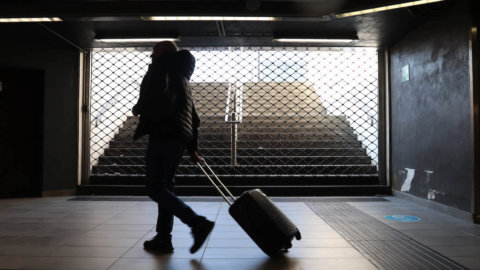Work is also changing rapidly. Not just the content of the job, but also the way you work. Work: at home or in the office? The pandemic has accelerated the already present trends towards a stimulated hybrid work from new technologies.
Without going into the merits of these complex issues, we would like to offer you, in the Italian version, this speech by Janina Conboye who, in the space that Pilita Clark dedicates to work on Mondays in the "Financial Times", tells us what is happening in London.
Work at home: but what a beard!
After two years of being in my bedroom, I decided to change things up and went to work in a cafe in my east London neighborhood. After I settled in, I realized the WiFi was so slow I couldn't even send emails. As soon as I finished drinking a long coffee, I decided to go home.
I like my apartment, but in this hybrid mode my and my partner's workdays at home don't coincide, and the peace of mind doesn't satisfy me (frankly, I hate it).
Many others are in a similar situation: working from home is boring, unproductive or simply impossible. But there is a solution. A third space which is neither the office nor the home, but somewhere in between: a flexible and accessible professional space, a space within reach.
Lavoro, the third space and the all access of WeWork
We all know the outcome of initiatives like WeWork with its shared workspaces that promised a different and cool lifestyle (free beer!). After the pandemic, WeWork offers a more flexible, “on demand” service in more than 250 locations, allowing individual workers to use the offices without continuous constraints in time and space. There has been an increase in membership of his "all-access" subscription, which gives access to more than 700 offices. This trend is being driven by individuals, as well as companies, who want to give their employees more flexibility in time and location.
Work, co-working 10 minutes from home
Dan Cable, professor of organizational behavior at the London Business School, sees this "third space" concept solve a number of problems. In the context of what he calls “new workers' expectations” — ie people want more flexibility not only on how, but also on where they work — the fact that the third spaces are close to the workers' residences is fundamental. “Ten minutes from home, that's what workers are looking for. They want to get rid of two hour transfer each day, 10 hours of wasted time”.
He adds that the third space could be an important component of the long-term revolution taking place in the world of work. “It's a specific, practical and cost-effective solution,” she says.
The London scene
Arc Club is one of many startups offering co-working spaces close to where the employees live. Hannah Philp and Caro Lundin opened the first site in Homerton, north east London in 2020 and have just opened a second in Camberwell Green in the south. They have 10 more in the pipeline.
Amenities include individual desks, call boxes, and meeting rooms -- there's coffee, networking with local professionals, and WiFi that works. It costs £25 (about €18) a day or £150 (€180) a month.
Who uses these spaces? The obvious candidates are obviously the freelancers and business founders individual. However, there are also people who want to have a few days off from commuting or are looking for one professional space to escape the children, roommates or the refrigerator.
Work, co-working as a benefit
Third spaces seem to fit perfectly with the way hybrid work is evolving and shaping the office landscape in big cities. When I talk to those in the real estate industry, I get the impression that companies tend to centralize.
To attract workers, they are selecting high-end office space, centrally located with, or close to, gyms, cafes and restaurants.
Yet while the return to the office is now the order of the day, it seems that many workers will be stationed in these offices for only a portion of the working week.
Now many workers are paying out of pocket to access a third space, but this cost could be included in employee benefits packages and bring staff back to the offices in 2022.
“That such a service could be offered as a benefit makes sense,” says Prof. Cable. “It seems to me an added value, as is the benefit. It sounds like this: “You are trusting me and helping me to do my job better”.
Office work breaks the routine
Cable believes that offering a flexible workspace is an advantage for companies: It's a pretty low investment for companies in terms of what they get back."
Working in a new place can increase productivity because breaks the routine. Research shows that the part of our brain that regulates motivation responds best to novelty.
Even a prestigious office could reduce productivity if you spend too much time (let alone commute) there.
A third space like a co-working offers new perspectives. If you can focus in a quiet area or talk to people you meet there – then engagement could increase.
There is a 30 minute walk between me and the office. Convenient, but if there was a flexible workspace next to my front door I'd be really tempted – especially if the coffee is good and my employer foots the bill.





